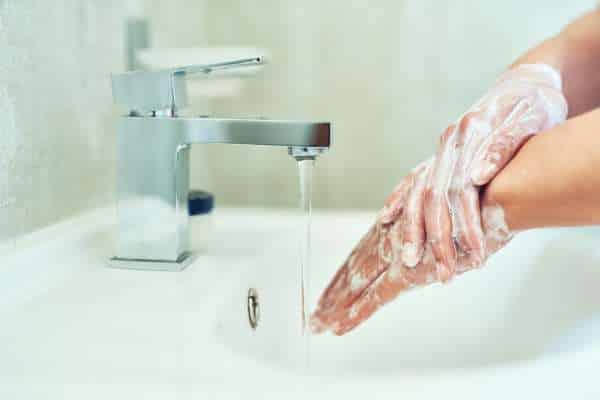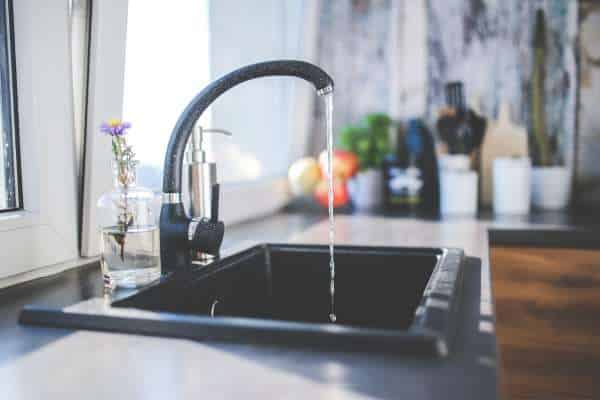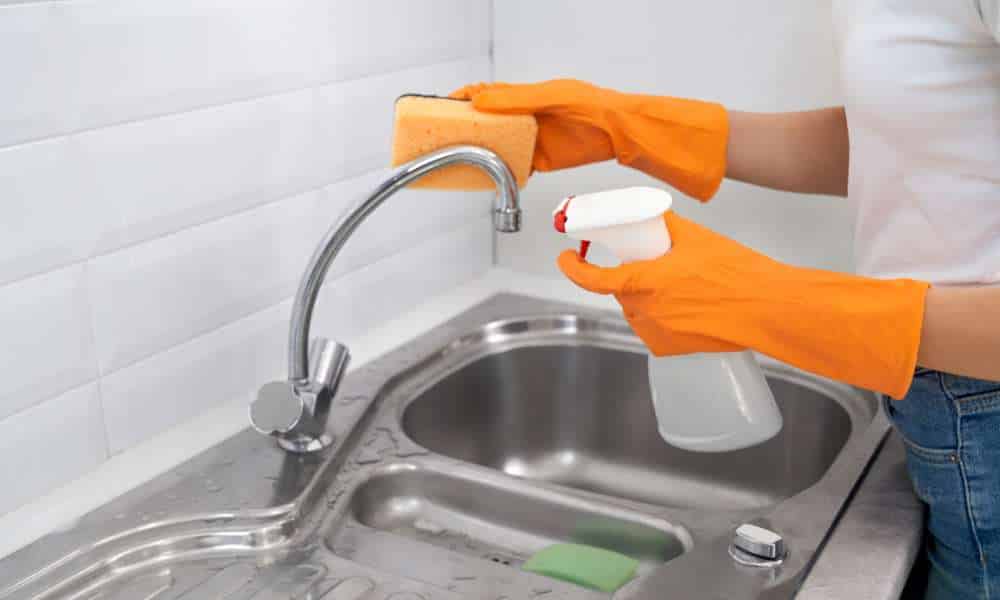Discovering how to effectively clean a kitchen faucet is not only about maintaining its gleaming appearance but also ensuring the health and safety of your household. A clean kitchen faucet isn’t just aesthetically pleasing; it also plays a crucial role in preventing the buildup of harmful bacteria and contaminants. Regular maintenance of this essential fixture can extend its lifespan and contribute to a healthier living environment for you and your loved ones. By mastering the art of spigot cleaning, you’re not only enhancing the functionality of your kitchen but also safeguarding against potential health risks and costly repairs in the future.
How Often Should I Clean My Kitchen Faucet?

It is recommended to clean your kitchen faucet at least once a week to prevent the buildup of grime, dirt, and bacteria. Regular cleaning can help maintain the appearance of your spigot and ensure it functions properly. Use a mild soap or vinegar solution to clean the surface of the faucet, paying special attention to any crevices or hard-to-reach areas where dirt may accumulate.
Can I Use Bleach To Clean My Faucet?

Yes, you can use bleach to clean your faucet, but it is important to do so carefully. Bleach is a powerful disinfectant that can help remove bacteria and germs from the surface of your spigot. However, it is crucial to dilute the bleach with water before using it on any surfaces in your home, including faucets. This will help prevent damage to the finish of the spigot and ensure that it is safe for use.
Using Vinegar For Mineral Buildup
Vinegar is a versatile and natural solution for removing mineral buildup from your kitchen faucet. Its acidic properties make it highly effective at dissolving calcium, lime, and other deposits that can accumulate over time. To use vinegar for cleaning, mix equal parts white vinegar and water in a bowl or spray bottle. Soak a clean cloth or sponge in the vinegar solution and apply it to the affected areas of the spigot. Allow the solution to sit for a few minutes to penetrate the buildup, then gently scrub with a soft-bristled brush or toothbrush. Rinse the spigot thoroughly with water and dry it with a clean towel to prevent water spots.
Cleaning Hard-To-Reach Areas
It’s important to pay attention to hard-to-reach areas of your kitchen faucet, as these areas can harbor dirt and grime. Use cotton swabs, toothpicks, or a small brush with soft bristles to clean crevices, grooves, and tight spaces. Dip your cleaning tool into a mixture of vinegar and water or a mild soap solution, then scrub the hard-to-reach areas carefully. Rinse the spigot with water and dry it thoroughly to prevent moisture buildup and mold growth.
Drying The Faucet Thoroughly

After giving your kitchen faucet a thorough cleaning, it’s imperative to dry it meticulously to prevent the formation of water spots and mineral deposits. Use a clean, dry microfiber cloth or towel to wipe down the entire surface of the spigot, paying special attention to any lingering moisture. Be sure to dry both the visible areas of the spigot as well as any hard-to-reach spots where water may accumulate. Additionally, consider using a separate cloth or towel to dry the spigot’s interior components, such as the aerator and handles, to ensure thorough drying. By taking the time to dry your spigot properly, you’ll not only maintain its appearance but also prolong its lifespan by preventing corrosion and mineral buildup.
Preventing Mineral Buildup
Incorporating simple maintenance practices into your routine can help minimize the accumulation of hard water deposits and prolong the life of your faucet. One preventive measure is to install a water softener or filtration system to reduce the hardness of your water. These systems work by removing minerals such as calcium and magnesium from the water, preventing them from depositing on your faucet and other fixtures. Additionally, regularly wiping down your spigot with a dry cloth after each use can help prevent water spots and mineral buildup. Pay special attention to areas prone to moisture accumulation, such as the base of the spigot and around the handles. Finally, consider using a commercial mineral deposit remover or protective sealant specifically designed for spigot to further safeguard against buildup. By implementing these preventive measures, you can keep your kitchen spigot looking pristine and functioning flawlessly for years to come.
Fixing Leaks
Fixing leaks in your plumbing can be a daunting task, but with the right knowledge and tools, it can be easily manageable. When it comes to choosing a kitchen faucet, consider factors such as the style of your kitchen, the functionality you need, and your budget. Opt for a spigot with ceramic disc valves for longer durability and efficiency in preventing leaks.
Dealing With Stubborn Stains
Stubborn stains on your kitchen faucet can be unsightly and challenging to remove. Fortunately, there are several methods you can try to tackle stubborn stains effectively. For light stains, a mixture of mild dish soap and warm water applied with a soft cloth or sponge may suffice. For more stubborn stains, consider using a gentle abrasive cleaner or a paste made from baking soda and water. Apply the cleaner to the stained areas and let it sit for a few minutes before scrubbing with a soft-bristled brush. Avoid using harsh abrasives or scouring pads, as these can scratch the faucet’s finish. If all else fails, you may need to resort to a commercial rust remover or lime scale remover, following the manufacturer’s instructions carefully. Once the stains are removed, rinse the spigot thoroughly with water and dry it with a clean towel to prevent water spots.
Extending The Lifespan Of The Faucet

One key way to extend the lifespan of your kitchen faucet is through regular cleaning and maintenance. It’s important to clean not just the visible surfaces, but also the internal components such as aerators and cartridges. Use a mild detergent or vinegar solution to remove mineral deposits and grime that can affect the performance of your spigot over time. Additionally, be sure to check for any leaks or drips and address them promptly to prevent further damage.
Tips For Maintaining A Clean Faucet

1. Regular Cleaning Schedule
Establishing a regular cleaning schedule is paramount in maintaining a clean kitchen spigot. Over time, water deposits, soap scum, and other contaminants can accumulate on the faucet’s surface, compromising its appearance and functionality. By dedicating a few minutes each week to cleaning your faucet, you can prevent buildup and prolong its lifespan. Set aside a specific day or time each week to give your spigot a thorough cleaning. This routine maintenance will help keep your spigot looking pristine and functioning optimally.
2. Avoiding Harsh Chemicals
Incorporating homemade cleaning solutions into your routine not only helps in avoiding harsh chemicals but also promotes a healthier living environment overall. By making small changes like switching to natural cleaners, you are taking steps towards reducing your exposure to toxic substances that can have long-term effects on your well-being. Remember, simple yet effective ingredients found in your pantry can work wonders in maintaining the cleanliness of your kitchen spigot without compromising on safety or quality.
3. Using A Soft Cloth Or Sponge
By using a soft cloth or sponge, you can also ensure that no residue or streaks are left behind after cleaning your kitchen spigot. This method allows for a smooth and even application of cleaning solutions, ensuring that every part of the spigot receives proper attention. Overall, incorporating this simple practice into your cleaning routine can help extend the lifespan of your kitchen spigot while keeping it looking pristine.
The Final Thought
Maintaining a clean kitchen faucet is crucial to ensure the health and safety of your household. By following the simple steps outlined in this article, you can easily keep your faucet looking new and functioning efficiently. Regular cleaning not only enhances the appearance of your kitchen but also prevents the buildup of harmful bacteria and mold. Remember to use gentle cleaning solutions and avoid abrasive materials to preserve the finish of your spigot. Take the time to clean your kitchen spigotregularly to enjoy a fresh and hygienic cooking environment for you and your family.

